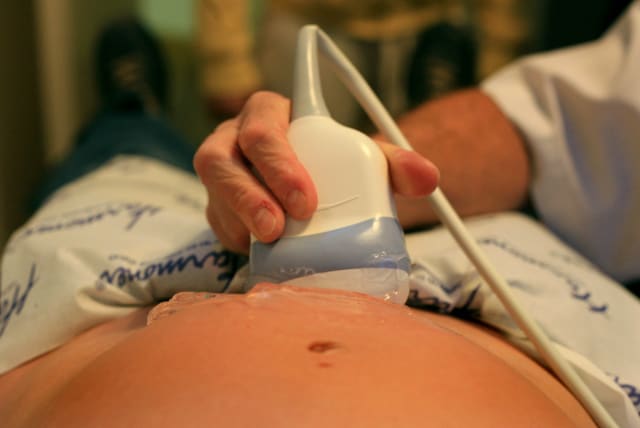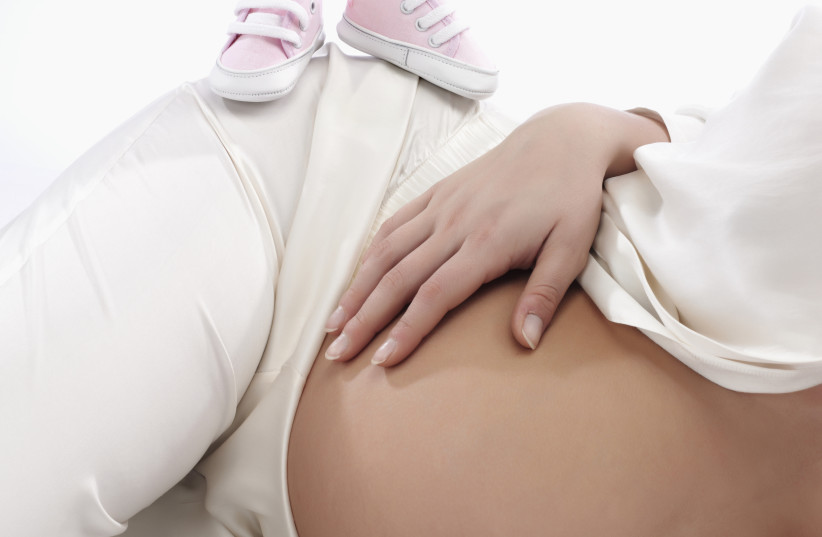A $1 smart glove could help prevent dangerous births - study

The device, which could prevent stillbirths in low-income countries, was designed using a simple surgical glove on which they printed flexible pressure and force sensors at the fingertips.
One dollar can't get you very far. But according to a new study, that is all it costs to get a "helping hand" during childbirth.
A team of scientists created a novel low-cost device to assist healthcare staff in identifying fetal position and the force applied to the fetal head during labor, factors that can contribute to obstructed labor and poor birth outcomes.
The technology can provide real-time data during vaginal examinations, potentially improving birth outcomes in low-resource countries, according to the research, which was published Monday in the peer-reviewed journal Frontiers in Global Women’s Health.
The low-cost glove can provide real-time data during vaginal examinations
Typically, physicians have a vast range of technologies to determine the cause of any problem that may arise during labor. In low- and middle-income countries, however, these technologies and staff trained to use them, are in low supply.
The researchers attribute 98% of stillbirths that occur in such countries to this problem, according to the study. One of the leading factors of dangerous birth is when the position or size of the fetus blocks the passage of the baby through the birth canal, called obstructed labor.
The device was designed using a simple surgical glove on which they printed flexible pressure and force sensors at the fingertips. The sensors contain metal-oxide nanocomposites that produce an electric current when touched or rubbed against objects. The sensors were made thin enough to not block a doctor’s sense of touch. Additionally, a second normal surgical glove can be worn over the smart glove. This will ensure sterile conditions in the vaginal cavity.
A smartphone app has also been developed to let doctors view the data in real-time
For the study, researchers created silicone elastomer models of a baby’s head, which mimic the delicate surface structures of a real fetal head. Next, an obstetrician was asked to perform mock vaginal examinations on the silicone heads using the smart glove to test whether the device was competent enough to indicate the fetal position and measure the force applied to the head.
The team found that the smart glove successfully detected the joints between the "bones" of the model heads. There was a surge in electrical current every time the glove’s finger passed over it, the study showed. The researchers noted that this finding will allow a clinician to determine where these joints are, and in turn, the orientation of the fetus. Further, the glove was able to measure the force applied to the heads, and that data was translated to the smartphone app in real time.
Will the results be the same in real-world conditions?
Scientists said they hope to next test the trial in humans.
“This is the first glove of its kind that could be used to identify the fetal position and therefore may be able to improve labor outcomes,” Dr. Shireen Jaufuraully of University College London, lead author on the study, said. “We hope that with successful clinical translation, the glove may be used worldwide, increasing the safety of assisted vaginal birth.”
Jerusalem Post Store
`; document.getElementById("linkPremium").innerHTML = cont; var divWithLink = document.getElementById("premium-link"); if (divWithLink !== null && divWithLink !== 'undefined') { divWithLink.style.border = "solid 1px #cb0f3e"; divWithLink.style.textAlign = "center"; divWithLink.style.marginBottom = "15px"; divWithLink.style.marginTop = "15px"; divWithLink.style.width = "100%"; divWithLink.style.backgroundColor = "#122952"; divWithLink.style.color = "#ffffff"; divWithLink.style.lineHeight = "1.5"; } } (function (v, i) { });

